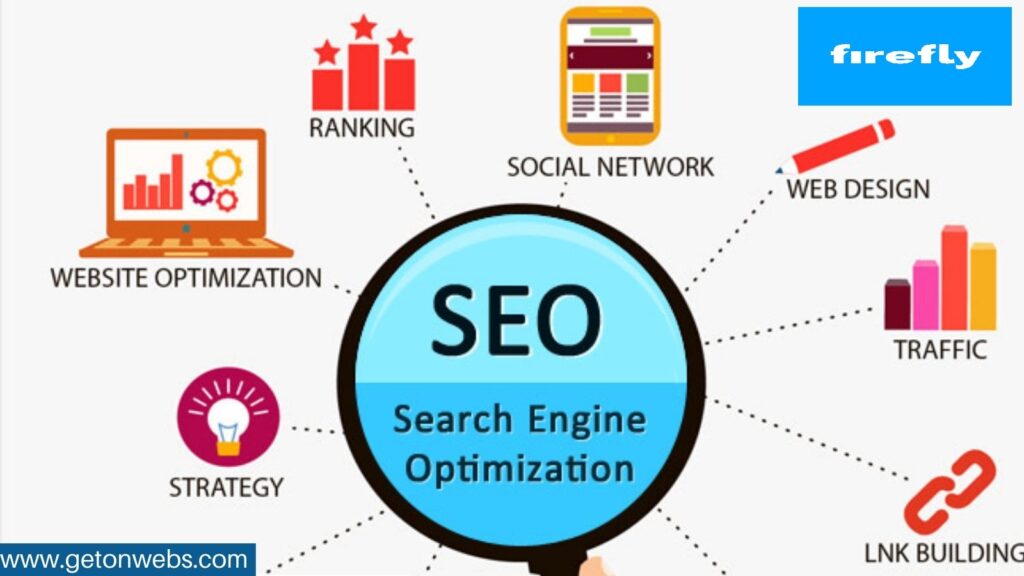In the vast digital landscape, where first impressions matter, it’s crucial to go beyond mere aesthetics when designing your website. Technical aspects that often go unnoticed can significantly impact your site’s search engine optimisation (SEO) and overall performance. As experts in helping SEO Services enhance their digital presence, we’ve put together a list of six SEO factors that you must consider during your web design process.
Buckle up and get ready to witness a surge of organic traffic as we dive into the world of search engine optimisation!
-
Core Web Vitals And Page Speed
It’s no secret that page speed is a critical ranking factor for search engines and top SEO Services providers are taking it as a top priority. In fact, Google has stated that “the goal of the search ranking algorithms is to deliver the best possible user experience.” So, if your website is slow, it’s not just costing you rankings and traffic, it’s also costing you conversions and revenue.
There are many factors that contribute to page speed, but one of the most important is your server response time. This is the time it takes for your server to receive and process a request from a visitor’s browser. If your server response time is too slow, it will significantly impact your page speed and, as a result, your SEO.
To ensure your website is optimised for these metrics, there are a few considerations to keep in mind during the design process:
- Make sure your initial HTML and CSS code is clean and efficient. This will help reduce FCP times.
- Avoid excessive use of JavaScript and other heavy resources that can slow down LCP.
- Be mindful of how elements on your page shift around as users interact with them. This will help minimise CLS.

-
Mobile friendliness
A mobile-friendly website is one that is designed to be easily viewed and used on a mobile device. In recent years, there has been a dramatic increase in the number of people using mobile devices to access the internet, and this trend is only expected to continue. As a result, it’s important to make sure that your website is designed in a way that makes it easy for mobile users to view and use.
There are a few key things to keep in mind when designing a mobile-friendly website:
- Use a responsive design: A responsive design is one that automatically adjusts to fit the screen size of the device it’s being viewed on. This is important because it ensures that your website will always look its best, no matter what device it’s being viewed on.
- Keep your content concise: Mobile users have shorter attention spans than desktop users, so it’s important to make sure your content is easy to scan and digest. Break up your text with headlines and subheadings, and use bullet points or lists whenever possible.
- Use large, easy-to-tap buttons: small buttons can be difficult to tap on a mobile device, so make sure your buttons are large enough to be easily tapped. Also, try to place them away from other elements on the page so they can be easily found and tapped.
Some things to consider when making your website mobile-friendly include using a responsive design, keeping your content short and easy to read, using large font sizes and buttons, and minimising the amount of scrolling and zooming required.
You should also make sure that your website loads quickly on mobile devices, as users are likely to give up if they have to wait too long for a page to load.
-
Add Necessary Information As Text, Not Images
It’s no secret that images are an important part of any website. They help break up text, add visual interest, and can even convey information on their own. However, when it comes to search engine optimisation (SEO), too many images can actually hurt your chances of ranking high in search results.
That’s because search engines like Google rely on text to understand what a website is about and match it with relevant queries. So, if your site is heavy on images but light on actual text, it may not be reaching its full potential in the SEO department.
Of course, this doesn’t mean you should never use images on your website. Just be sure to balance them out with plenty of informative text so that search engines can properly index your site.
In addition, make sure all of your images are optimised for the web with regards to file size and alt text. By following these simple tips, you can ensure that your website is both beautiful and visible to searchers looking for what you have to offer.
-
Lazy-Load Images And Video
Lazy loading is a technique for loading images and videos on a web page only when they are needed. This can help improve page load times, especially if there are many images or videos on a single page.
When using lazy loading, the browser only loads the images or videos that are visible on the screen. As the user scrolls down the page, more images or videos are loaded as they come into view. This is in contrast to loading all images and videos upfront, which can take longer and use more data.
Lazy loading can be used for both images and video, but it is most commonly used for images. It is supported by all major browsers, including Chrome, Firefox, Safari, and Edge.
-
Optimise Images
It’s no secret that images are essential for any website. Not only do they make your site more visually appealing, but they also play an important role in search engine optimisation (SEO).
In order to ensure that your images are helping, rather than hindering, your SEO efforts, there are a few things you need to keep in mind.
First and foremost, always optimise your images for the web. By doing this, you’ll ensure that your images are as small as possible without sacrificing quality, which will help your pages load faster. And since page speed is a key ranking factor for Google, this is an important consideration.
In addition to optimising your image files themselves, you also need to make sure that you’re using relevant and keyword-rich alt text with each one.
This is the text that appears when an image fails to load, and it’s what Google uses to determine what an image is about. So, including keywords like “SEO Services”, “top SEO company” can help improve your rankings for those terms.
-
Optimise Videos
It’s no secret that video is one of the most powerful tools in a marketer’s toolkit. Not only is it an engaging way to reach your audience, but it’s also a great way to boost your SEO. Here are a few tips on how to optimise your videos for SEO:
- Use keyword-rich titles and descriptions
Make sure your video titles and descriptions include relevant keywords for your business. This will help your videos show up in search results when people are searching for those keywords.
- Optimise your thumbnail image
Your thumbnail image is what appears in the search results, so make sure it’s something that will grab attention and make people want to click through to watch your video. Use a high-quality image that represents the content of your video.
- Create transcripts of your videos
Transcripts can be extremely helpful for people who want to watch your videos but don’t have sound turned on (or are watching them without sound). They can also be helpful for people with hearing impairments. Creating transcripts of your videos can also help with SEO, as they provide another way for Google to index the content of your videos.
Conclusion
The key to optimising your website lies in understanding how web design and SEO work together. By taking the six crucial SEO considerations discussed in this article into account, you can ensure that your website is designed with search engine optimisation in mind, thus giving your business a better chance of success.
Utilising these strategies will give you an advantage over competitors and help drive more organic traffic to your site, resulting in increased visibility for your brand online.
For more information and help, you can connect with top SEO Services provider for better results.




